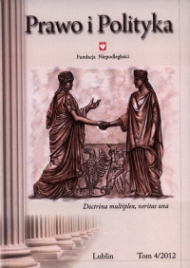Ewolucja systemu wyborczego do Sejmu w latach 1991-2011 i niektóre jego skutki
The evolution of the electoral system to the Sejm in the years 1991-2011 and some of its consequences
Author(s): Marek JarentowskiSubject(s): Government/Political systems, Electoral systems, Transformation Period (1990 - 2010), Present Times (2010 - today)
Published by: Fundacja Niepodległości
Keywords: general elections; electoral system changes; electoral formula; electoral districts; electoral threshold; consequences of electoral system;
Summary/Abstract: In Poland after collapse of communism there were hold seven free elections to the first house of parliament. All of them were hold under proportional formula. With regard to a particular type of proportional formula, magnitude of electoral districts, or electoral thresholds, there were significant differences. But all in all, subsequent changes of electoral system (with the exception of the change introduced in 2001) aimed at making the electoral system more favorable to bigger parties. The 1993 electoral reform (introduction of small electoral districts, d’Hondt formula and electoral threshold) and its consequences proved to be a big surprise for smaller parties; in 1993 parliamentary elections almost 35% of votes were wasted (they were given to the parties that did not receive any seat). The gradual strengthening of the system resulted in the reduced number of parties, both in the election and gaining seats in parliament.
Journal: Prawo i Polityka
- Issue Year: 2012
- Issue No: 4
- Page Range: 33-48
- Page Count: 16
- Language: Polish

